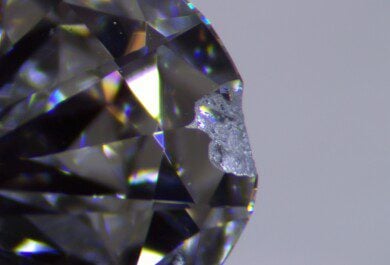This response is written to address the article
The Effect of Indexed Upper Half Facets written by Mr. Peter Yanzer.
The opening paragraph of the article presents a concept that indexing top halves produces different amount of weight retention. This is correct, although not as dramatic as presented. A diamond cutter knows that brilliandeering an entire diamond calls for a weight loss of approximately 4%. This causes one to question the facts presented in the conclusion of this article Setting a Constant Girdle Thickness at the Mains which shows a range of finished weights from .866 cts. (Index 3) to .774 cts. (Index 1) or 11%. As noted, these findings are outside the parameters of realistic cutting. The results presented in the article were accurate when they concluded that a fraction of a point was lost by cutting the top halves in different configurations (stating that the Index 1 stone was .817cts. VS the Index 3 stone of .808cts.), but the results change upon further examination of indexing with relation to diameter, and then change more so in setting constant girdle thickness at the mains, which in a normally cut stone is not a product indexing the upper girdle halves. Girdle thickness can only be increased by adding more girdle (read reducing the diameter of the stone) either by bruting or faceting or polishing.
Under Setting a Constant Girdle Thickness at the Halves another discrepancy is that the crown height will change by “indexing”. It is erroneous to think that indexing the girdle facets to 3 will make the size of the facets bigger thereby adding to the crown height and leaving the diamond with a larger weight retention. In actuality, the thinner the girdle underneath the halves means that more weight was removed than in either the Index 1 or 2 models. This contradictory evidence is found in the portion of the article, Setting a Constant at the Mains.
As a side note, measuring the crown height percentage at these points is questionable and could explain inconsistencies of the original AGS Cut Grade System where sometimes a stone with a lower cut grade actually looked better than one with a higher cut grade. Such inconsistence sometimes can be explained by comparing data generated scores produced by the W.R.Bray’s Cut Scoring System for Modern Brilliant Cut Diamonds (patent pending, aka BrayScore® with AGS cut grades.
Under Indexing and Millimeter Spread at the Same Weight, another discrepancy in the findings is that this “indexing” of upper girdle halves will always change the diameter of the diamond. This is a false assumption because in actual cutting ,if the plane of the girdle is 90° from the table (theoretically but not uncommon in normal cutting) or less than 90° (rarely seen) then there would be no removal of diameter. If the plane of the girdle is greater than 90° (usually done so the girdle will not be seen in the face up position) then there’s a possibility of diameter reduction.
Diamond cutting is a three dimensional world. Sculpture. An upper girdle facet cannot simply be indexed to one side and achieve the dramatic thinning of the girdle without also intentionally raising the angle of that facet. This was pointed out by Yanzer who called it the “resultant change in angle”. To simply move (index) the half facet to the 3 or 4 position without making it on a higher angle would result in a disfiguring of the bottom point of the star facet. This “indexing”is not a simple directional change made by a click of the dop, but rather a directional change plus an angular change of correction made by the cutter. These two elements of facet making are taken into account with the BrayScore method of quantifying cut.
The models in the section Setting a Constant Girdle Thickness at the Mains start out with a thicker than normal girdle. By utilizing the BrayScore system and just analyzing the deductions regarding the upper girdle facets and not any other data, the 2 index stone scores midway between models 1 and 3. Compared to the 2 index stone, the 1 index scores about 50 points lower and the the 3 index stone actually scores 50 points higher because the girdle was thinned to a more desirable thickness. If the model girdle thickness under the main facets is “normalized” to a more palatable range of 2 -2.5% found on fine makes, then this thinning would produce a girdle edge that is too thin, a completely opposite effect. Under this “normalization” the Index 2 stone would score the highest with the Index 1 and 3 stones slightly lower by an average of 40 points in a system of 1000 points awarded to a stone with no cutting mistakes.
The reasoning behind BrayScore deducting more points for upper girdle facets that are “pasted” on by the cutter (model 1 index) and those facets that are “dug” too much (model 3 index) is simple. In the model 1 instance, “pasted” halves have less definition between themselves and the main facet. This produces less of a jump of surface light from one facet to another when the stone is moved. This look is similar to that found on a diamond with a real shallow crown, where there would be less jump of surface reflection from the table to the stars to the mains. In both instances, both “pasting” and “digging” produce an uneven girdle around the stone. The straight girdle is a desirable look that enjoys over 80 years of market share. The diamond is a piece of sculpture and as such is viewed in more than in just a face up position. The work of the cutter is mostly measurable and using present day measuring devices can be evaluated on a very precise level and certainly on par with the level of precision used in color and clarity grading.
In conclusion, the errors in The Effect of Indexed Upper Half Facets show that cut evaluation methodology has its shortcomings when including only a gemological and academic view. An empirical view that would include knowledge from the cutting sector would yield a cut evaluation system with greater weight.
Discuss…











